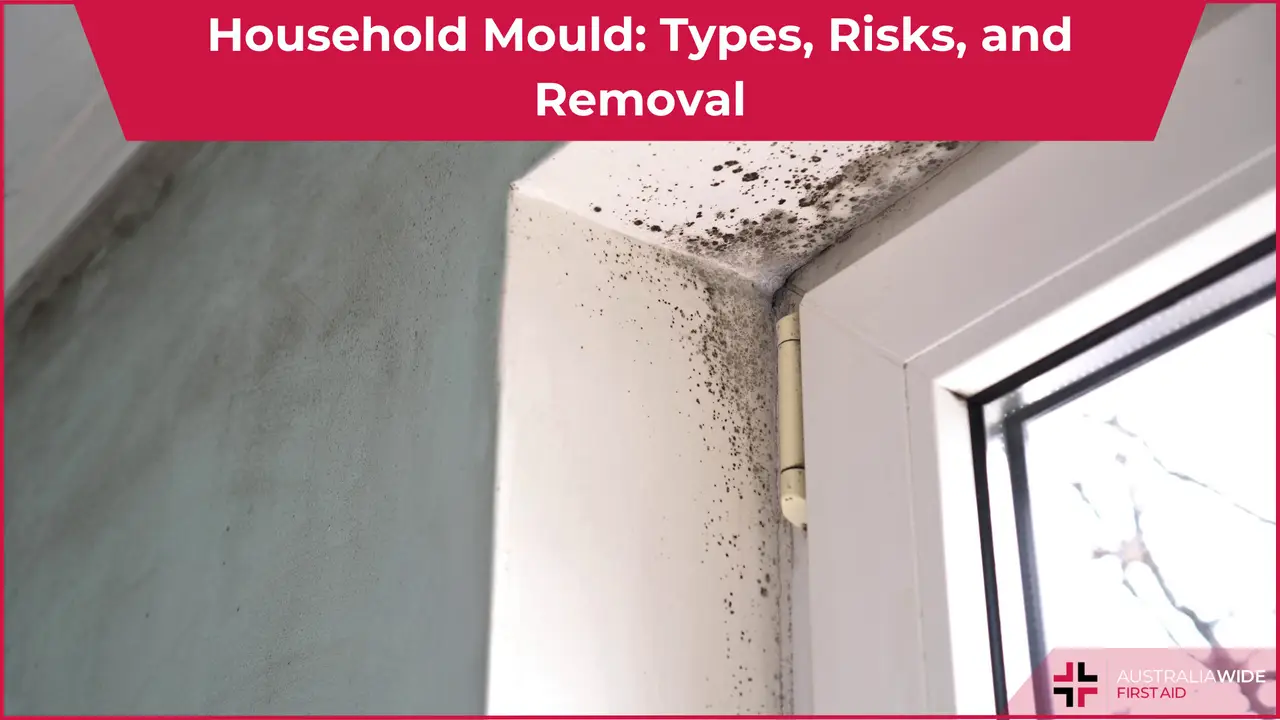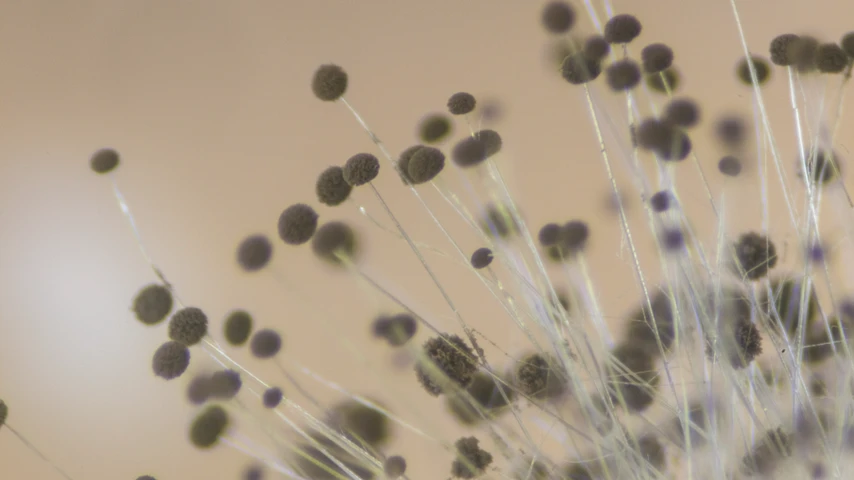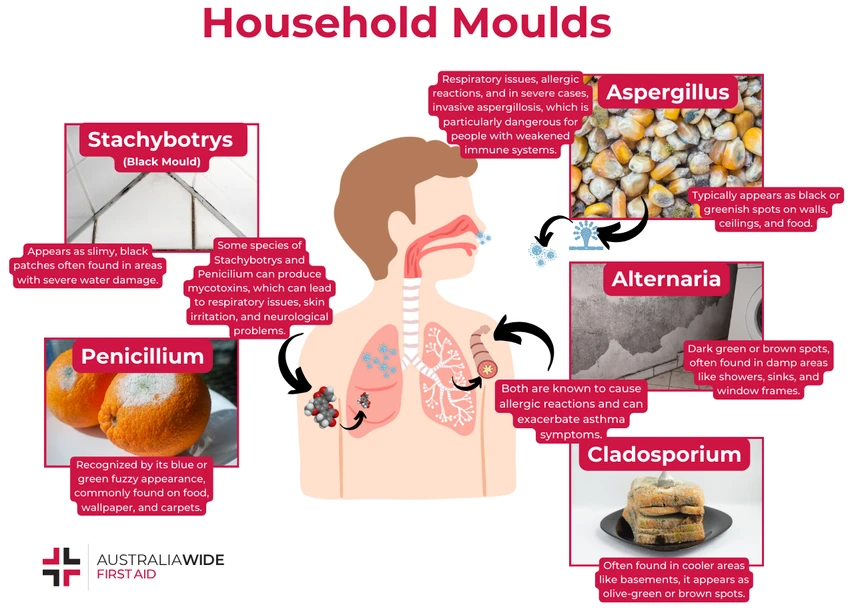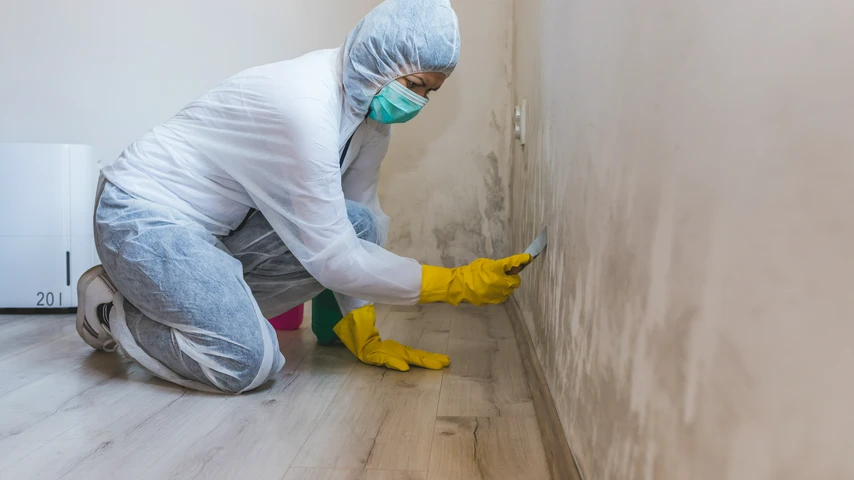Household Mould: Types, Risks, and Removal


Mould is a common problem in Australian homes, especially in humid regions or areas with poor ventilation.
Various types of mould can thrive indoors, posing health risks and structural damage.
Understanding how to identify different moulds, the dangers they present, and the best methods for removal is crucial for maintaining a healthy living environment.
Mould is a type of structure that some types of fungus can form, living off animal and plant materials.
You will have seen mould on foods and in your bathroom, but they can also grow on building materials such as drywall and wooden structures.
Moulds produce microscopic spores, which usually spread through the air. These spores can lay dormant for years, some indefinitely, waiting for the right environment to grow in.
One the moisture level is high enough, the mould will reproduce many times to form a colony. It is this colony that you can see.
This most often occurs in areas of the home with high humidity and low ventilation, such as bathrooms, kitchens, storage cupboards, and plumbing spaces.
Identifying mould early is crucial to prevent health risks and property damage.
Signs of mould include:
Professional mould testing can provide a more accurate identification of mould types and their concentrations.

Aspergillus
Identification: Typically appears as black or greenish spots on walls, ceilings, and food.
Risks: Can cause respiratory issues, allergic reactions, and in severe cases, invasive aspergillosis, which is particularly dangerous for people with weakened immune systems.
Cladosporium
Identification: Often found in cooler areas like basements, it appears as olive-green or brown spots.
Risks: Known to cause allergic reactions and can exacerbate asthma symptoms.
Penicillium
Identification: Recognized by its blue or green fuzzy appearance, commonly found on food, wallpaper, and carpets.
Risks: Some species can produce mycotoxins, which can lead to respiratory issues and other health problems.
Stachybotrys (Black Mould)
Identification: Appears as slimy, black patches often found in areas with severe water damage.
Risks: Produces mycotoxins that can cause severe respiratory issues, skin irritation, and neurological problems.
Alternaria
Identification: Dark green or brown spots, often found in damp areas like showers, sinks, and window frames.
Risks: Can trigger allergies and asthma, particularly in sensitive individuals.

Mould exposure can lead to a range of health problems, especially for vulnerable groups such as children, the elderly, and individuals with pre-existing respiratory conditions.
Common symptoms of mould exposure include:
Some moulds can produce toxic secondary metabolites, called mycotoxins.
Long-term exposure to these moulds, like Stachybotrys. can result in more severe health issues, including neurological symptoms and chronic respiratory conditions.
It’s important to note that there is no practical way to get rid of all mould inside your house.
The spores are microscopic and can live indefinitely, even when dried out. They can also travel long distances, and may be brought home by any member of the household.
All it takes is a few spores settling in a damp area for a few days, and they will begin to spread.
Because of this, removing mould as soon as you notice it is the best way to keep on top of infestations.
Small Areas (<1 square meter)
Materials Needed: Protective gloves, mask, goggles, bleach, buckets, and multiple microfibre cloths.
Larger Areas or Severe Infestations
For significant mould problems, it is advisable to hire professional mould remediation services.
Professionals will assess the extent of the infestation and identify the mould type. They will use specialized equipment and cleaning agents to remove mould.
Structural repairs may be necessary if the mould has caused significant damage.

Ventilation
Ensure good airflow in your home by using exhaust fans, opening windows, and keeping doors open.
Humidity Control
Use dehumidifiers in humid areas and maintain indoor humidity levels between 30-50%.
Fix Leaks
Repair any leaks in roofs, walls, or plumbing to prevent water accumulation.
Regular Cleaning
Keep surfaces clean and dry, especially in areas prone to dampness such as bathrooms and kitchens.
Mould is a pervasive issue in Australian homes that can lead to significant health risks and property damage.
By understanding the types of mould, identifying their presence early, and using effective removal and prevention strategies, homeowners can maintain a healthier and safer living environment.
Regular maintenance, proper ventilation, and prompt repairs are key to keeping mould at bay.

March 25, 2025
Explore non-traditional paths to sobriety, including mindfulness, yoga, nutritional therapy, and community-based support, for a personalized approach to recovery.

September 7, 2022
Menopause is the final period, when a woman, trans man, or non-binary person assigned female at birth's ovaries run out of eggs and the body can no longer ovulate. Menopause comes with several symptoms, complications, and treatment options.

July 26, 2024
Transcutaneous Electrical Nerve Stimulation (TENS) is a therapeutic method of pain relief. It utilises an electrical device that emits electrical currents and streams the impulses via electrode patches attached to the skin.